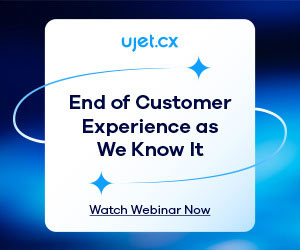Nick Martin at NICE discusses how Work Force Management controls can meet the challenges posed by a digital world.
The purpose of any solution is to solve a challenge; in workforce management, a WFM system needs the appropriate controls to solve the challenges associated with data integrity and acquisition, staff requirement calculation, schedule optimization and change management.
Today, those challenges are both taking place in and being driven by a digital world.
The digital world added multiple layers of complexity to workforce management. Broadly speaking, those complexities can be simplified into a few broad categories:
- The emergence of many new channels businesses can use to interact with customers.
- The capability of these channels to enable employees to interact with multiple customers simultaneously.
- The characteristic for some of these channels to have delayed responses between employees and customers.
- The possibility that the channel may change over the course of the interaction.
- The difficulty in interpreting traditional KPIs against digital channel interactions.
How WFM Needs to Evolve
In this new digital landscape, WFM solutions that for years have offered workforce managers the ability to plan, hire, forecast, schedule, manage and automate daily processes must be able to flex and expand to handle these new complexities. To do so effectively, a WFM solution needs to offer:
- A way to identify and define digital channels: The traditional model of differentiating between immediate response and deferred response, while a step in the right direction, may not be specific enough. Voice, chat, SMS and face-to-face interactions (e.g., Zoom, Microsoft Teams and WebEx) all fall into the immediate response domain, but there are enough differences between them that they likely require further categorization.
- Affordances to handle simultaneous interactions: Such affordances should consider concurrent sessions both within and between different channels. For example, agents may be handling several simultaneous chats concurrently (within-channel concurrency) or handling a chat and an SMS or social media interaction concurrently (between-channel concurrency).
- The ability to tailor session concurrency based on the type of interaction or even the employee. Some customer interactions – even within the same channel – may require different session concurrency limits. Technical support chats, for example, may require that agents handle fewer concurrent sessions than sales chats do due to the nature of the interaction and the focus required of the employee. Likewise, not all employees can handle the same level of concurrency; some employees may be able to handle more chats/SMS/social media interactions concurrently than others. Affordances should allow workforce managers to configure workloads to the individual employee’s ability.
- A way to dynamically prioritize channels: If the WFM solution permits more than two broad categories of channels (immediate response and deferred response), the WFM solution must also have a way for workforce managers to set priorities that specify which channels are handled first. Just as important is the ability to define and manage interruptibility – which channels can interrupt others.
- Flexibility in forecasting and scheduling: There are many approaches to forecasting and scheduling with digital channels (e.g., by type of interaction, customer experience or a hybrid method). The WFM solution should offer enough flexibility to forecast and schedule based on the unique needs of the contact centre while addressing instances when the customer changes channels over the course of the interaction.
- A mechanism to help the business make sense of the data. Data acquisition and integrity are more complex with digital channels, and this can have a significant impact on AHT and other metrics. KPIs can be misleading unless the WFM solution provides ways to help workforce managers understand and interpret them appropriately. Ideally, the solution can take it a step forward with an engine that is sufficiently sophisticated to process data and produce results that make sense in a digital world.
Workforce management, while never a simple undertaking, has become infinitely more complex with the increase in digital channels, and the WFM solution you employ must evolve accordingly.
To stay competitive, businesses need a WFM solution with intuitive controls that help its users navigate the digital world with ease and confidence – a WFM solution that is ready for interactions that can go beyond the traditional.
This blog post has been re-published by kind permission of NiCE-ltd – View the Original Article
For more information about NiCE-ltd - visit the NiCE-ltd Website
Call Centre Helper is not responsible for the content of these guest blog posts. The opinions expressed in this article are those of the author, and do not necessarily reflect those of Call Centre Helper.
Author: NiCE-ltd
Published On: 19th Jul 2021
Read more about - Guest Blogs, NiCE






 NiCE (NASDAQ: NICE) is transforming the world with AI that puts people first. Our purpose-built AI-powered platforms automate engagements into proactive, safe, intelligent actions, empowering individuals and organizations to innovate and act, from interaction to resolution. Trusted by organizations throughout 150+ countries worldwide, NiCE’s platforms are widely adopted across industries connecting people, systems, and workflows to work smarter at scale, elevating performance across the organization, delivering proven measurable outcomes.
NiCE (NASDAQ: NICE) is transforming the world with AI that puts people first. Our purpose-built AI-powered platforms automate engagements into proactive, safe, intelligent actions, empowering individuals and organizations to innovate and act, from interaction to resolution. Trusted by organizations throughout 150+ countries worldwide, NiCE’s platforms are widely adopted across industries connecting people, systems, and workflows to work smarter at scale, elevating performance across the organization, delivering proven measurable outcomes. 






























